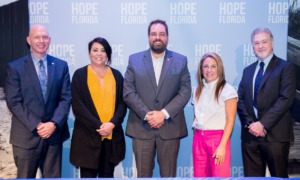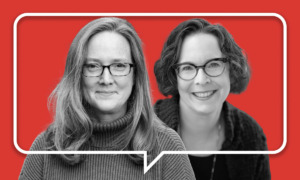Some 44,000 young people have been targeted by $222 million in Youth Opportunity grants aimed at getting them back to school, enrolling them in college and providing work experience in community-service projects.
“We need to make sure our children are prepared for this new economy by helping every child enter school ready to learn and graduate ready to succeed,” President Clinton said in a radio address unveiling the new grant program last month.
The grants, ranging from $2 million to $11 million, have been awarded to 36 low-income communities to attack unemployment among out-of-school youth ages 14 to 21. The youth service-provider agencies selected include those in inner-city Washington, D.C., the Mexican border town of San Diego, Calif. and the Pine Ridge Indian Reservation in South Dakota.
The grants represent what the U.S. Department of Labor called “the first installment” of a five-year, $1.4 billion effort “to provide education and job-training opportunities to young people who are most at risk of permanent joblessness.” Most of the grants go to areas designated as Empowerment Zones or Enterprise Communities, where companies get special tax breaks for investing in those areas.
David Brown, deputy director of the D.C.-based National Youth Employment Coalition, praised the program for “focusing resources on young people living in empowerment zones and high-poverty areas.” Brown especially liked the notion that there are no income eligibility requirements, and said the holistic approach of engaging the whole community “in a saturation model is really a novel idea.”
The youth program director for the San Diego Workforce Partnership, Marian Paul, admitted “real excitement” over receiving a $7 million grant; she said it targets 1,400 youth, ages 16 to 21, mostly in the southeast part of the city known as Barrio Logan. She said the designated enterprise community in the city is 60 percent Latino, 20 percent African American and a mixture of “everyone else.”
The agency’s priority will be to make the area’s youth believe “they can access any career in any area of the city,” Paul said. She is confident her agency can do so with Manpower, the temporary worker agency, as a prospective employer (“They place 60 percent of their employees in permanent slots,” said Paul), an emphasis on high-tech, and youth workers who recruit youth “where they congregate.”
For instance, the San Diego effort plans to include High Tech High, a new charter school focusing on math, science, and “the development of problem-solving skills needed to succeed and lead in the new economy,” according to a synopsis from the school. The curriculum is based on high-tech projects and on partnerships with the local technology industry, which will provide student internships. The school expects to begin classes this fall.
Raymond Holland, interim director of the Private Industry Council of San Francisco, was happy to receive a $7 million grant “in the smallest county in the state of California.” Holland, pointing out that the city and county are the same entity, remarked that “the cost of living here makes Manhattan look cheap.”
All the more reason, he said, to ensure that youth in the city’s four enterprise communities – South of Market, the Mission District, Visitacion Valley and Bayview/Hunters Point – “don’t fall through the cracks.”
The city is engulfed by a “booming” job market, Holland said. “It is our main challenge,” he said, “to get our diverse youth population into the mainstream, both economically and socially.”
Not all are happy about the grants. Jack Wiest, executive director of the Chicago-based Alternative Schools Network, said for-profit vendors (such as Sylvan Learning Centers) were used as examples in the Request for Proposals (RFP). “In my 25 years in the youth field, I’ve never seen RFPs list for-profit vendors,” Wiest said.
He also said the RFP stipulated that one learning center be placed in the grantee’s area. “Those Keystone Kops in Washington don’t know anything,” he said. “You can’t have one learning center in an area, because the youngsters would have to cross several gang turfs to get there – so they won’t go.”
Contact: Department of Labor (202) 693-4650, www.yomovements.org.






























